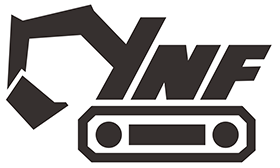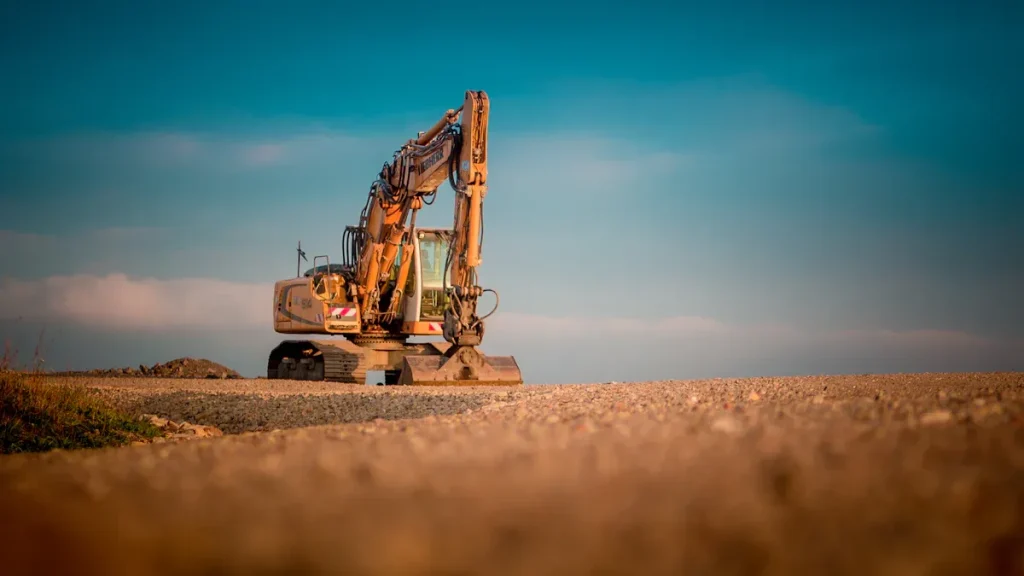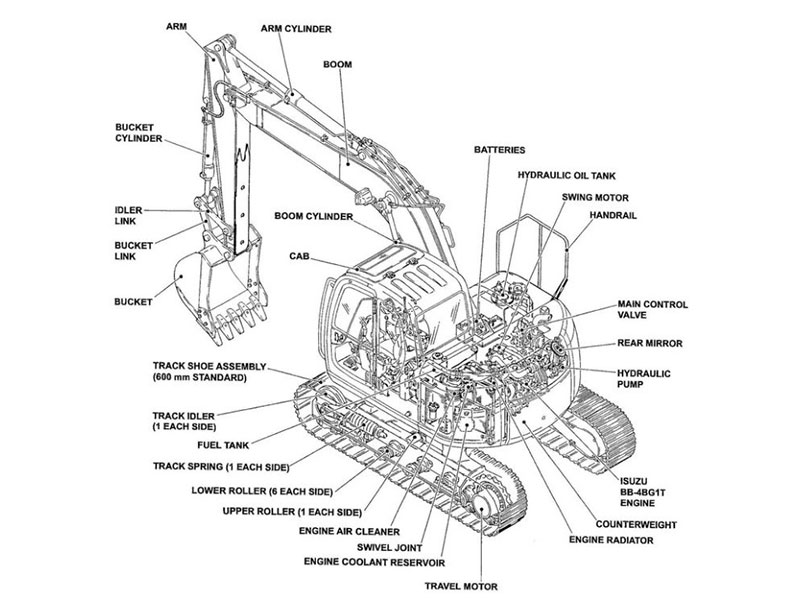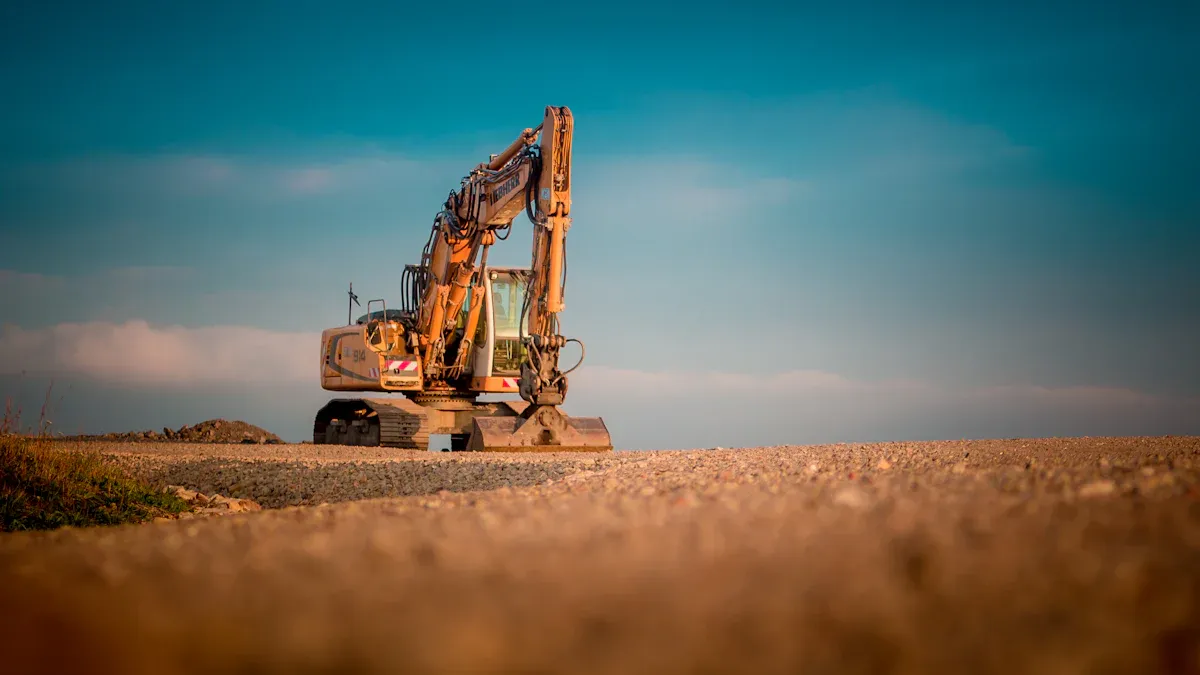
The basic parts of an excavator include the undercarriage, house, cab, boom, stick, and bucket. Each of these parts of an excavator handles specific functions, such as movement, control, and digging. Operators rely on the essential parts of an excavator to perform safe and efficient excavation. Understanding the key parts of an excavator improves safety and helps maximize the machine’s performance. People who know the basic parts of an excavator can spot issues early and keep the equipment running well. The excavator’s components and functions all work together to handle tough jobs.
Key Takeaways
Excavators have main parts like the undercarriage, house, cab, boom, stick, and bucket that work together to dig, move, and lift materials.
The undercarriage supports the machine and helps it move safely on different surfaces; regular checks and proper track tension keep it stable and durable.
The house and cab provide control, balance, and comfort for the operator, improving safety and productivity during work.
The arm, including the boom, stick, and bucket, controls digging depth and reach; choosing the right bucket and attachments boosts efficiency.
The engine and hydraulic system power the excavator; daily fluid checks and good maintenance help the machine run smoothly and last longer.
Main Components of an Excavator
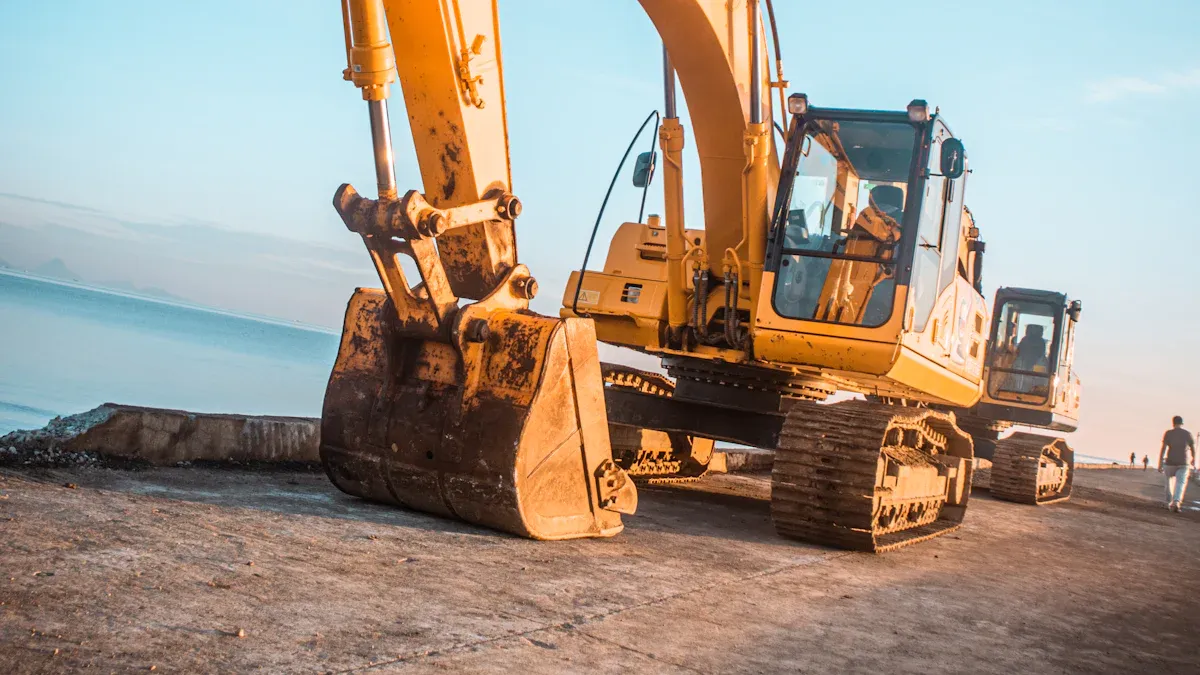
Excavators rely on several main sections to perform their work. Each section contains important parts of an excavator that handle specific tasks. Understanding these sections helps operators and technicians recognize how the machine works as a whole.
Undercarriage
The undercarriage forms the foundation of every excavator. It supports the entire weight of the machine and allows it to move across different surfaces. Most excavators use tracks, which provide stability and traction on rough or uneven ground. The undercarriage includes several key excavator parts such as tracks, rollers, idlers, and sprockets. These components work together to keep the excavator stable and mobile.
The excavator undercarriage must handle heavy loads and constant movement. Proper track tension improves stability and reduces the risk of breakdowns. Regular wear testing and lubrication help extend the life of these parts.
Modern undercarriage designs improve maneuverability and reduce maintenance needs. Studies show that proper adjustment of track tension can lower failure rates by about 15%. Wear checks every 500 to 1000 hours keep the undercarriage in good condition.
House and Cab
The house sits above the undercarriage and contains the engine, hydraulic system, and swing drive. It rotates 360 degrees, allowing the operator to dig or lift in any direction without moving the tracks. The cab is the operator’s workspace, providing controls, visibility, and protection.
An ergonomic cab design can reduce operator fatigue by up to 20%, leading to better safety and higher productivity.
The house also holds the counterweight, which balances the machine during lifting and digging. The swing gear inside the house enables smooth rotation.
Regular maintenance of the cab and house, such as checking electrical systems and cleaning sensors, ensures stable operation and comfort for the operator.
Arm, Boom, and Stick
The excavator arm consists of three main parts: the boom, the stick, and the bucket. The boom attaches to the house and provides reach and height. The stick connects the boom to the bucket and controls how far the bucket extends. The bucket handles digging, scooping, and carrying materials.
The boom gives the excavator its reach and helps position the bucket for digging or lifting.
The stick, sometimes called the dipper, controls the depth and precision of excavation.
The bucket’s size and shape affect how much material the excavator can move at once.
The arm, boom, and stick use high-strength alloys to handle tough jobs. These materials can extend service life by over 20%. Modern excavator boom and stick designs allow for greater flexibility and efficiency. Studies comparing different excavator models show that improvements in these components lead to higher productivity and faster cycle times.
The main components of an excavator—undercarriage, house and cab, and arm with boom and stick—work together to deliver power, precision, and stability. Operators who understand these sections can use the excavator more safely and efficiently.
Basic Parts of an Excavator Undercarriage
The basic parts of an excavator undercarriage play a vital role in how the machine moves and stays stable on different surfaces. Each part works together to support the excavator’s weight, provide traction, and protect against damage. Understanding these components helps operators maintain the excavator’s stability and maneuverability in all working conditions.
Tracks and Track Pads
Tracks and track pads form the main contact point between the excavator and the ground. The tracks wrap around the undercarriage and allow the machine to move forward, backward, and turn. Track pads attach to the tracks and touch the ground directly. They influence traction, stability, and durability. Different track pad designs suit different jobs. For example, wide track pads help the excavator move on soft or muddy ground, while narrow pads work better on hard surfaces.
Operators should check track tension often. Proper tension keeps the tracks from slipping or coming off during use.
The width and gauge of the tracks affect how well the excavator handles slopes or rough terrain. A wider track spreads the machine’s weight over a larger area, reducing ground pressure and helping the excavator avoid sinking. The pitch, or distance between track links, also matters. Smaller pitch gives more flexibility, while larger pitch supports heavier loads. These design choices help the excavator adapt to many types of terrain.
Rollers and Idlers
Rollers and idlers guide and support the tracks as they move. Top rollers hold the upper part of the track, while bottom rollers carry the weight of the excavator. Idlers sit at the ends of the track frame and keep the tracks aligned and tight. Together, these parts ensure smooth movement and reduce wear on the tracks.
Rollers and idlers use strong materials like alloy steel to handle heavy loads.
Regular inspection and lubrication extend their lifespan, which can reach up to 3,000 hours with proper care.
Field studies show that the arrangement and number of rollers affect how evenly the excavator’s weight spreads across the tracks. More rollers help the machine move smoothly over rough ground and reduce the risk of track damage. The idlers also play a key role in keeping the tracks at the right tension, which is important for both movement and stability.
Sprockets and Final Drives
Sprockets and final drives power the movement of the tracks. The sprocket is a toothed wheel that meshes with the track links. When the operator moves the controls, the engine sends power to the final drive, which turns the sprocket. This action moves the tracks and propels the excavator.
Component | Function | Durability Factors |
|---|---|---|
Sprocket | Engages track links to move the machine | Tooth design, material strength |
Final Drive | Transfers engine power to the sprocket | Sealed housing, regular oil changes |
Sprockets must fit the track links perfectly to avoid slipping and wear. The size of the sprocket affects how fast and smoothly the tracks move. Larger sprockets work well for high-speed tasks, while smaller ones handle heavy loads better. Final drives use gears and oil to transfer power efficiently. Keeping these parts clean and well-oiled helps prevent breakdowns and extends their service life.
Rock Guards and Track Bolts
Rock guards and track bolts protect the undercarriage from damage. Rock guards sit along the sides of the tracks and block rocks, debris, and mud from getting inside the moving parts. This protection keeps the tracks, rollers, and sprockets working smoothly. Track bolts hold the track pads and other parts together. They must stay tight to prevent the tracks from coming apart during operation.
Rock guards increase the durability of the excavator’s undercarriage, especially in rocky or harsh environments.
Operators should check track bolts for tightness and replace any that show signs of wear or damage.
Regular maintenance of rock guards and bolts helps prevent costly repairs and keeps the excavator safe to use.
The basic parts of an excavator undercarriage—tracks and track pads, rollers and idlers, sprockets and final drives, and rock guards and track bolts—each serve important functions. They work together to provide mobility, adapt to different terrains, and protect the machine from damage. By understanding these parts, operators can keep the excavator running smoothly and safely on any job site.
Excavator House and Operator Cab
Operator Cab
The operator cab serves as the main control center for the excavator. Inside the cab, the operator finds all the controls needed to move and operate the machine. Good cab design improves comfort, safety, and visibility. Many modern excavators use ergonomic seats and adjustable armrests to fit different body sizes. Research shows that mismatches between cab design and operator size can cause posture problems and reduce safety. Studies have found that better seat height adjustment and improved visibility help operators avoid accidents.
Ergonomic assessments of operator cabs highlight the need for better seat and armrest design.
User feedback points to visibility and posture as key factors for safe operation.
New methods use mannequins and kinematic modeling to test cab space and comfort.
Experts recommend wider seat adjustment ranges to fit more operators.
High accident rates in crane and excavator operations show why ergonomic cab design matters.
Industry standards stress the importance of good cab layout to reduce human error.
A well-designed cab gives the operator a clear view of the work area. Large windows and smart placement of controls help the operator stay alert and react quickly. These improvements lower the risk of mistakes and injuries.
Counterweight
The counterweight sits at the rear of the excavator. This heavy part balances the weight of the arm and bucket during digging or lifting. Without the counterweight, the excavator could tip over when lifting heavy loads. The size of the counterweight depends on the size and type of the excavator. Operators must check that the counterweight is secure before starting work. A stable counterweight keeps the excavator safe and steady, even on uneven ground.
Swing Drive
The swing drive allows the excavator house to rotate. This system lets the operator turn the upper part of the machine 360 degrees. The swing drive uses gears and motors to move the house smoothly. Fast and precise rotation helps the operator dig, lift, and place materials without moving the tracks. Regular checks of the swing drive keep the excavator running well and prevent breakdowns.
Tip: Operators should listen for unusual noises from the swing drive. Early detection of problems can prevent costly repairs.
The excavator house and operator cab work together to give the operator control, balance, and flexibility. Good design and regular maintenance help keep the machine safe and efficient.
Parts of an Excavator Arm and Attachments
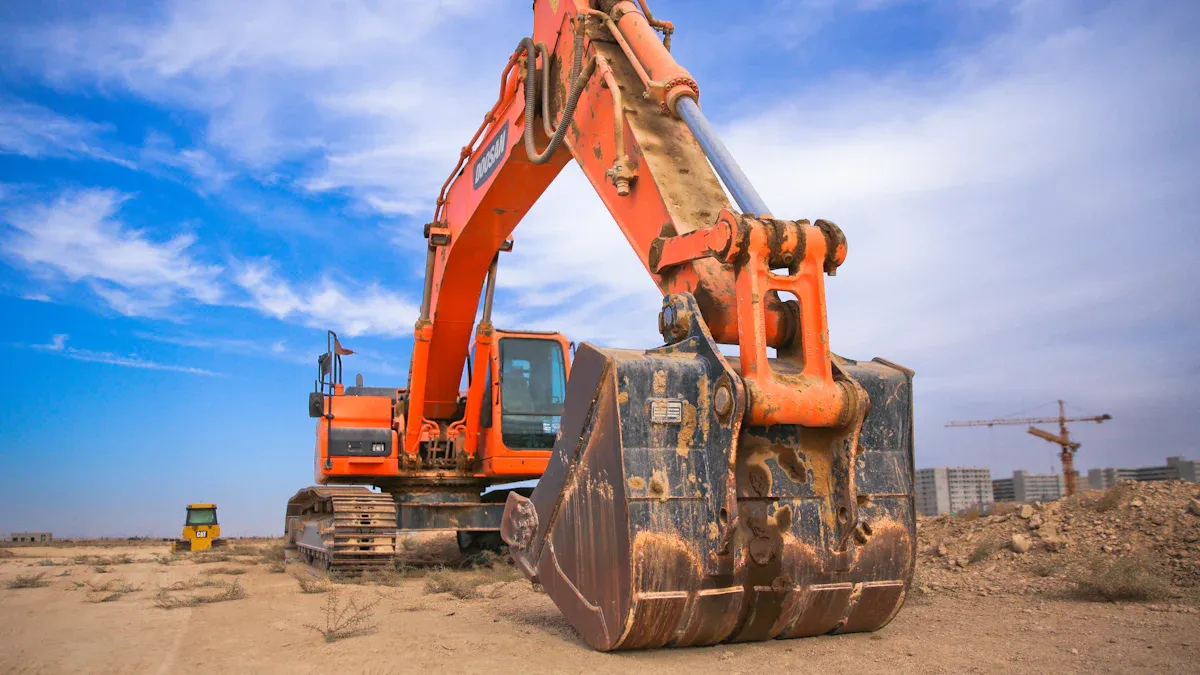
Boom
The boom forms the main upper section of the excavator’s digging mechanism. It connects the house to the stick and supports the lifting and movement of heavy materials. The boom raises and lowers to control the height and reach of the bucket. Engineers have improved boom designs by using composite materials and optimizing shapes. For example, a composite boom with an elliptical interface reduced weight by over 60%, making lifting and digging more efficient. These changes help the excavator handle tough excavation jobs with less stress on the machine.
Stick (Arm/Dipper)
The stick, also called the arm or dipper, attaches to the end of the boom. It extends and retracts to move the bucket closer or farther from the excavator. The stick controls the depth and precision of digging. New designs use advanced materials and optimized hinge points. These upgrades have increased overall performance by more than 5%. The stick works with the boom to give the operator better control during digging and dumping.
Bucket
The bucket is the tool at the end of the stick. It scoops, lifts, and carries soil, rocks, or debris. Different bucket shapes and sizes suit different tasks. Lightweight and high-strength excavator buckets reduce stress on the arm and improve digging speed. Engineers use genetic algorithms to design buckets that last longer and weigh less. Stress tests show that these buckets perform well under maximum digging force. The bucket plays a key role in the excavator’s digging and material-handling capabilities.
Tip: Operators should choose the right bucket for each job to maximize efficiency and reduce wear.
Common Attachments
Excavators use many attachments to handle different tasks. Each attachment changes how the machine works.
Hydraulic breakers: Break concrete or rocks.
Grapples: Grab and lift logs or scrap.
Thumbs: Hold materials in place during lifting.
Rippers: Loosen hard soil or frozen ground.
Compactors: Press soil or gravel flat.
A table below shows common attachments and their uses:
Attachment | Main Use |
|---|---|
Hydraulic Breaker | Breaking concrete/rocks |
Grapple | Grabbing and lifting |
Thumb | Holding materials |
Ripper | Loosening soil |
Compactor | Compacting ground |
These attachments expand the excavator’s role beyond digging and dumping. Operators can switch attachments to match the needs of each project.
Excavator Power and Hydraulic Systems
Engine
The engine acts as the heart of the excavator. It provides the power needed for all machine functions, including digging, moving, and lifting. Most excavators use diesel engines because they deliver strong performance and reliability. Engineers have studied ways to improve engine efficiency. They found that matching the engine load and reducing throttling loss can make the excavator use less fuel and work more efficiently. Some new models use hybrid power systems that combine hydraulic motors with electric motors or accumulators. These systems help save fuel and reduce emissions.
Hybrid engines can downsize power needs and improve fuel economy.
Advanced control methods, like fuel minimization strategies, help the engine use less fuel during operation.
Energy regeneration systems can recover up to 45% of potential energy, making the excavator even more efficient.
Hydraulic System
The hydraulic system moves the excavator’s arm, boom, stick, and bucket. It uses pressurized fluid to transfer power from the engine to different parts of the machine. Hydraulic pumps, hoses, and cylinders work together to control movement and force. Engineers have improved hydraulic systems by using independent metering and better control valves. These upgrades reduce energy loss and make the excavator respond faster to operator commands.
A table below shows some benefits of modern hydraulic systems:
Feature | Benefit |
|---|---|
Independent metering | Less energy loss |
Energy regeneration | Higher efficiency |
Advanced control algorithms | Smoother operation |
Some electric excavators use frequency conversion motors and variable pumps. These designs can reach energy efficiency rates between 43% and 71%, much higher than traditional engines.
Fuel and Fluid Tanks
Fuel and fluid tanks store the diesel, hydraulic oil, and coolant needed for the excavator to run. Clean and full tanks keep the engine and hydraulic system working smoothly. Operators should check fluid levels every day. Low or dirty fluids can cause damage and reduce the machine’s lifespan. Proper fluid storage also helps prevent leaks and keeps the excavator safe on the job site.
Tip: Always use the correct type of fuel and hydraulic oil for each excavator model.
Control Levers
Control levers let the operator move the excavator with precision. These levers connect to the hydraulic system and engine controls. By moving the levers, the operator can swing the house, move the arm, and control the bucket. Good lever design helps reduce operator fatigue and improves safety. Newer excavators use electronic controls for smoother and more accurate movements.
The engine, hydraulic system, fluid tanks, and control levers all work together to power the excavator. These systems help the machine dig, move, and handle heavy lifting tasks with ease.
Understanding the main components of an excavator helps operators improve safety and equipment care. Each part, from the undercarriage to the hydraulic system, works together to boost efficiency and reduce accidents. Data shows that operator training increases efficiency by 12% and safe procedures lower accident rates by 30%. Regular maintenance and smart use of technology extend equipment life and cut costs. Operators who know their machines can achieve better job site performance and longer-lasting results.
FAQ
What is the most important part of an excavator for safety?
The operator cab plays a key role in safety. It protects the operator and provides clear visibility. Good cab design helps prevent accidents and keeps the operator comfortable during long shifts.
How often should operators check excavator fluids?
Operators should check fluid levels every day before starting work. This habit helps prevent breakdowns and keeps the machine running smoothly.
Can one excavator use different attachments?
Yes, most excavators can use many attachments. Operators can switch buckets, breakers, grapples, and other tools to match the job. This flexibility increases the machine’s usefulness.
What causes the most wear on excavator tracks?
Cause | Effect |
|---|---|
Rough terrain | Faster track wear |
Poor tension | Track slipping |
Debris buildup | Damage to components |
Regular cleaning and correct tension help reduce wear on tracks.
